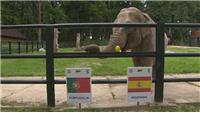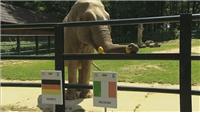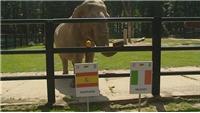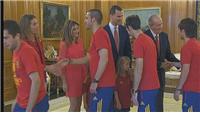
Wroclaw

Province: Dolny Śląsk (Lower Silesia)
Population: 633,000
Area: 293km²
Motto: Wroclaw – the meeting place
Wroclaw, is the main city of southwestern Poland.
Wroclaw was the historical capital of Silesia and is today the capital of the Lower Silesian Voivodeship. Over the centuries, the city has been part of either Poland, Bohemia, Austria, Prussia, or Germany, but since 1945 it has been part of Poland. According to official population figures for 2010, its population is 632,996, making it the fourth largest city in Poland.
Wroclaw has been selected as a European Capital of Culture for 2016. It will share the title with San Sebastián, Spain.
THINGS TO SEE
The Rynek, a good place to start any exploration, is the second largest square in Poland and the adjoining town hall is so big that it incorporates three internal streets. It took nearly 200 years to build. The complex is home to an art museum and a treasury, and is a mishmash of architectural styles – a theme echoed back outside on the Rynek, an amalgam of gothic and, with the north and south sides rebuilt since 1945, extravagant art nouveau.
Wroclaw's pride and joy is just down the road: the Racławicka Panorama. A 114m long rotunda housing a panoramic painting with dimensions, it depicts the 1794 battle of Raclawice (a village 320km away) when Polish peasants defeated the mighty Russian army. It was a fleeting victory but 100 years later patriots in Lviv commissioned the panorama and after WWII it was sent to Wroclaw. Fearing offending their liberators, the Polish authorities did not put it on display until 1985.
The rabbit warren that is the Old Town could keep you occupied for weeks, yet other parts of the city also have much to offer, not least Cathedral Island – the cradle of Wroclaw. The centrepiece is the mammoth Cathedral of St John the Baptist, though the prize for oldest ecclesiastical building goes to the tiny Church of St Giles. If you have had your fill of bricks and mortar – no matter how beautifully arranged – then head to the Botanical Gardens or, back on the mainland, Park Szczytnicki.
Fan zone: Plac Rynek (Market Square)Wroclaw's 30,000-capacity fan zone, located in the heart of the city, will feature three big screens and will open for the duration of the tournament from 10.00 to 00.00 local time. It is free to enter and will broadcast all 31 matches live, though at other times there will be plenty of entertainment such as football skill tests, five-a-side pitches, live concerts and DJ sets, as well as offer a full range of food and beverages.
TRANSPORT
To and from
Copernicus Airport Wroclaw is 13km south-west of the city and has regular flights to Copenhagen, Oslo, Paris, Brussels, Dublin, Eindhoven and Stockholm as well as multiple destinations in Germany, the United Kingdom and Italy. There are also daily connections to Warsaw and Gdańsk, though trains, running from the beautiful Wroclaw Główny, are a nicer option time permitting. Express trains to Warsaw take just five hours and there are also regular services to Poznan (2.5 hours) and Gdańsk (7.5 hours). The nearby bus station offers similarly-timed links to Warsaw and Poznan, as well as a number of international destinations.
Distances to other UEFA EURO 2012 venues
Poznan – 175km Warsaw – 350km Gdańsk – 480km
Lviv – 620km Kyiv – 1,090km Kharkiv – 1,515km Donetsk – 1,750km
In and around
The city is serviced by a network of buses and trams. Journeys within the centre cost a flat 2.50zł, longer trips 3zł, while fast services and night buses (those with numbers over 200) cost 5zł. A fast tram line is being built, which will connect the eastern part of the city with the airport and Municipal Stadium Wroclaw. The tourist office on the Rynek rents bicycles.
Municipal Stadium Wroclaw

Resembling a Chinese lantern, Wroclaw's venue saw an Ekstraklasa record crowd when it opened.
UEFA Capacity: 40,000
Record attendance: 42,771 (WKS Śląsk Wrocław 1-0 KS Lechia Gdańsk on 28/10/2011)
Opened: September 2011
Constructed by the Sleza river and connected to the city centre by a new tram line, the stadium's shape resembles a Chinese lantern.
It has been built as part of a complex including offices, conference halls, a fitness centre, casino and the museum of local favourites Śląsk.
Johan Voskamp scored the first goal at the new venue on 28 October 2011, a 51st-minute penalty as Śląsk defeated Lechia Gdańsk 1-0. The game was a 42,771 sell-out – the highest since the Ekstraklasa was established in 2005/06.
Mario Balotelli and Giampaolo Pazzini secured a 2-0 victory for Italy in the first international match at the new stadium, on 11 November 2011.
Hot News
- Funny Balotelli!
- Spanish fans celebrate Euro Cup win
- That's German WAGS!
- The sexy female fans in Euro 2012
- Euro 2012: Spain fans celebrate victory
- Spain vs Italy in clash of the Euro WAGs
- Euro 2012 Final - Spain 4 : 0 Italy, Part 2
- Germany knocked out by Italy
- Natalia Siwiec blasts Sol and the BBC
- Coleen Rooney reveals her bikini body secrets
- Italy's fans celebrated wildly
- Euro 2012 Final - Spain 4 : 0 Italy, Part 1
| Rank | Team | W/D/L | Pts |
|---|
Cities & Stadiums
The Top 3 Teams of Previous Tournaments
| Year | Winners | Runner-up | Third place |
|---|---|---|---|
| 2008 | Spain | Germany | Russia / Turkey |
| 2004 | Greece | Portugal | Netherlands / Czech Republic |
| 2000 | France | Italy | Netherlands / Portugal |
| 1996 | Germany | Czech Republic | France / England |
| 1992 | Denmark | Germany | Netherlands / Sweden |
| 1988 | Netherlands | Soviet Union | Italy / West Germany |
| 1984 | France | Spain | Denmark / Portugal |
| 1980 | West Germany | Belgium | Czechoslovakia |
| 1976 | Czechoslovakia | West Germany | Netherlands |
| 1972 | West Germany | Soviet Union | Belgium |
| 1968 | Italy | Yugoslavia | England |
| 1964 | Spain | Soviet Union | Hungary |
| 1960 | Soviet Union | Yugoslavia | Czechoslovakia |



